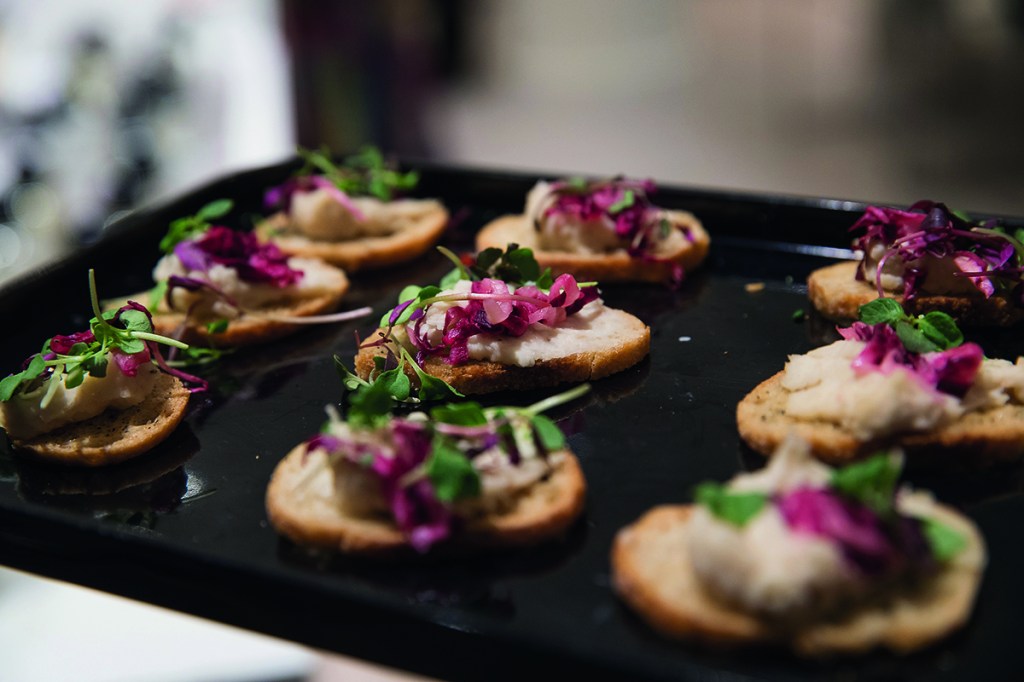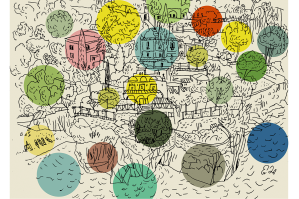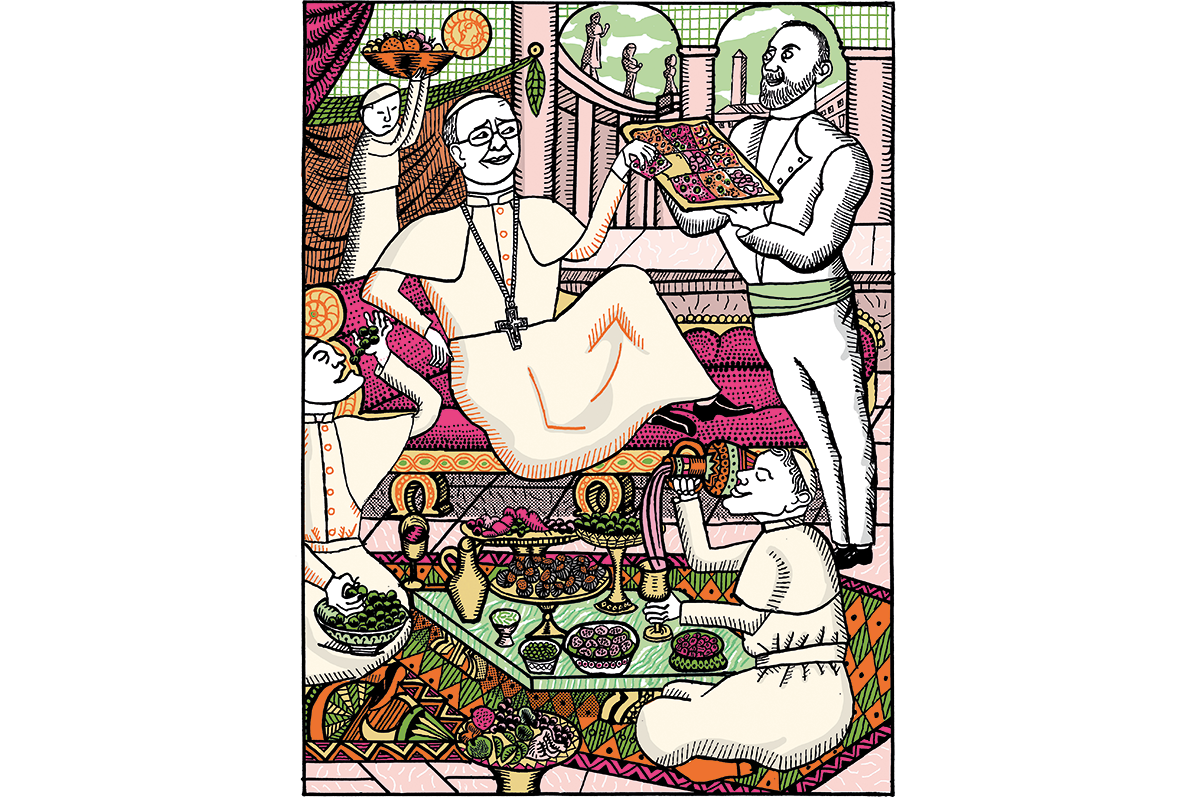Radicchio, radicchio, wherefore art thou radicchio? A red-leafed chicory by any other name would doubtless taste as bitter — but it certainly wouldn’t sound as pedigreed. Consider the following bit of dialogue:
‘Would you like a chicory salad?’
The natural response is a hasty, ‘Not just at the moment, thank you,’ the very name of chicory summoning up painful memories of undercooked chickpeas and bowls of foliage into which well-meaning persons have seemingly shaken the broken fragments at the bottom of the cereal box. Compare and contrast with the following overture:
‘Would you care for some grilled Chioggia radicchio embellished with small cubes of buffalo mozzarella and drizzled with a reduction of Balsamico di Modena?’
Enthusiastic acquiescence is the only possible response. It’s all in the way you put it. Like the Montagues and Capulets, the radicchio family is inextricably rooted in the soil of the Veneto region of northern Italy; indeed, the 16th-century ancestors of Rossa di Verona radicchio were doubtless flourishing in the fields through which Romeo and Juliet hastened to be wed at Friar Laurence’s cell. Perhaps Friar Laurence, herbal expert that he was, had read Pliny the Elder’s learned 1st-century dissertation on the vegetable in Naturalis Historia, where he recommended it as a means for purifying the blood and helping insomniacs get to sleep. But although radicchio was known in Pliny’s day, Italy forgot about it in the centuries that followed. Cultivation only began in the Veneto in the 15th century, a hundred years before Shakespeare told the tale of Verona’s star-crossed lovers.
Legend has it that birds flying through the Veneto at the change of the seasons carried radicchio seeds in their beaks and dropped them on the bell tower of Dosson, a village near Treviso. Somehow they took root, perhaps in dirt lodged between the stones. The seedlings were discovered by local friars who took care of the bell tower. Among them must have been a brother botanist who, like Shakespeare’s Friar Laurence, knew his baleful weeds from his precious-juiced flowers, for they decided to nurture the young plants, which in time broke into a cloud of blue flowers. It was eventually realized that the leaves were edible if collected before flowering.
Later on, another discovery was made: if you pull up the radicchio in the fall, after a couple of frosts, and leave it in a cool dark place for two weeks with its roots in fresh water, the plant continues to grow. In the absence of sunlight, the new growth displays pure white stalks and veins, while the leaves turn a deep frost-induced red. The process is known as forcing, and it is unique to Tardivo di Treviso (which, like Champagne, is a protected designation of origin in Europe).
Once forcing is complete, the old leaves are peeled away to reveal a dramatically striped radicchio heart, shaped like a curly headed tassel. So whimsical is its appearance that it could have been the sartorial inspiration for the puffed and slashed doublet sleeves sported by young Renaissance men-about-town. Whatever its impact on the fashion industry c. 1600, Tardivo di Treviso, along with little brother Precoce di Treviso, remains a gastronomical inspiration for chefs today. Its strong and distinctive flavor pairs well with citrus, olives, garlic, cognac and (like just about every other savory food on the face of the earth) bacon.
But are we North Americans to be forever deprived of this culinary delight? Certainly not. The first and best option is to make an extended visit to northern Italy. If by some misfortune that’s not on the table, a growing number of farmers in the Pacific Northwest are getting into radicchio production, including some who are trying out their own forcing techniques in emulation of the famed Tardivo.
The climate on that part of the West Coast is similar enough to the Veneto to produce convincing results, although as far as forced radicchio goes, it’s early days — much of the available information about growing radicchio is, predictably, in Italian, and it’s a tricky crop to produce. In January 2020 a group of farmers from Oregon and Washington State embarked on a chicory tour of northern Italy to see if they could pick up any tips on radicchio-wrangling from the experts. It will be interesting to see how things develop from here.
Of course, unforced radicchio is well-known in North American supermarkets. What we mostly find here is the tightly headed, grapefruit-shaped Chioggia variety. Chioggia is an island village at the southern end of the Lagoon of Venice, joined to the mainland by causeways. Like a backwater echo of Venezia la Serenissima, its canals are lined with painted fishing boats and charming exemplars of Veneto architecture in various shades of pastel stucco. Where the Chioggiottos found room on their tiny island to cultivate radicchio is unclear from a glance at the map; like all the best things in life, it must be a miracle.
The Chioggia radicchio, although somewhat milder than the Treviso varieties, remains a delightfully bitter addition to raw salads. It gains sweetness on being cooked. Italians sometimes caramelize it and add rice, dry red wine and chicken stock, simmering until the texture of the risotto is just right, and then adding generous quantities of butter and grated parmesan cheese — real comfort food. Another version of risotto calls for the authentic Tardivo to be added to the rice along with Prosecco from the sloping vineyards north of Treviso — talk about cooking like a local. Perhaps in a future Oregonian twist, some New World chef will pair sparkling white wine from the Willamette Valley with radicchio that hangs its hat in Corvallis.
Although radicchio is as indisputably Italian as Verdi, it will doubtless adapt well to the Pacific shores, as so many other Italian newcomers have already done — only this time, instead of enriching the nation with spaghetti Westerns, it’s the nation’s Western spaghettis that will benefit. One mouthwatering spaghetti recipe suggests ricotta, radicchio and garlic; could anyone quibble with that?
But however naturalized radicchio becomes, it’s hard to imagine anything by that name losing its Italian identity. You can take the radicchio out of Chioggia, but you can’t take Chioggia out of the radicchio. I have no doubt that on moonlit nights, rows of little Chioggias throw back their heads in the fields of Oregon and roar out Va pensiero, Verdi’s chorus of the Hebrew slaves weeping by the waters of Babylon, lingering with particular emotion over ‘O, mia patria!’ as they remember the canals of their Adriatic home.
Shakespeare is clearly in the wrong about the ‘rose by any other name’ thing. Can you picture a mere chicory singing Verdi? Of course not. But a radicchio is as comfortable with Verdi as it is in a Renaissance painting by one of the Bellinis, or nestled in a 21st-century salad bowl with flakes of Parmigiano Reggiano, green olives, dried sausage and sliced fennel. What’s in a name? Tradition, history, terroir, culture. Radicchio holds them safe, folded in its tightly headed leaves and its lovely, faintly ridiculous name.
This article is in The Spectator’s September 2020 US edition.

























